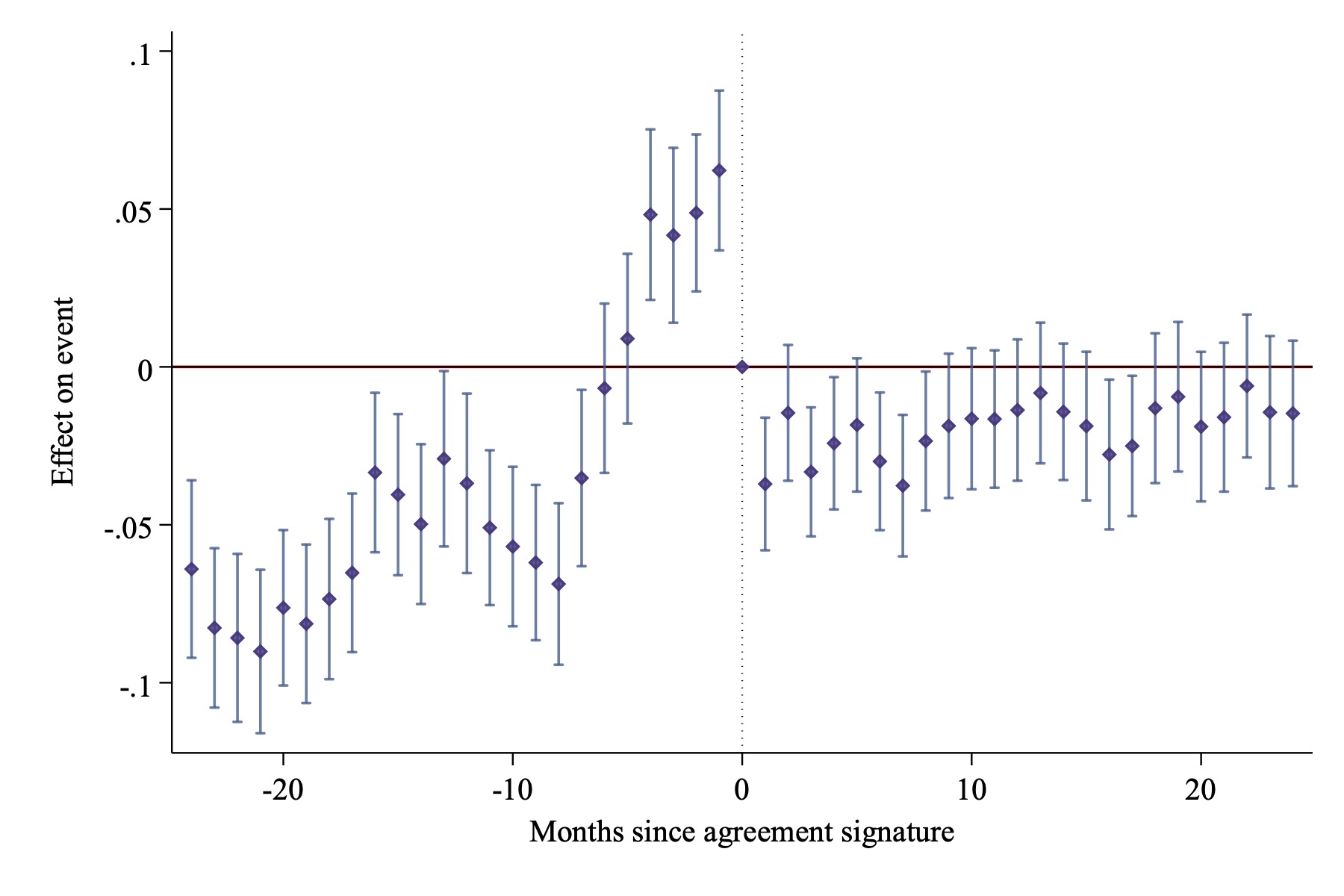War and Peace: Measuring conflict dynamics in the presence of peace accords in Africa
Authors: Myriam Marending
Abstract: This paper assesses peace agreement negotiations and their role for signatory, non-state military actors. It uses original data on actor-level conflict events and peace agreement signatures, matched between ACLED and PA-X covering 43 countries in Africa during 1997 and 2019. Exploiting sharp changes around the date of signing across actors , I employ a two-step difference-in-difference design where panel event study estimates of 24 months ex post are compared to the ones 24 months ex ante accounting for differential trend of signatory actors. The results suggest an increase in fighting just before the signing, indicating strategic motives to increase leverage in the bargaining. The net effect of signing an agreement is ambiguous accounting for dynamics ex ante and ex post. I find suggestive evidence that the signing of an agreement is associated with large reduc- tions in conflict prevalence and intensity in areas of previous fighting by 53% and 31% six months after the signing, respectively. In contrast, the peace agreement signature had no measurable impact on the violent activity of the signatory groups in new locations of activity ex post.
STRATEGIC VIOLENCE AHEAD OF SIGNING A PEACE AGREEMENT

Event study graphs depicting the dynamics 24 months before and after the first peace agreement signature on outcomes of conflict prevalence (measured as logarithm of the number of conflict prevalence). It indicates that future signatory groups increase their strategic violence in the months leading up to the signing, leveraging negotiation capacity. Testing for a mean shift of violence dynamics, conflict prevalence reduces significantly in the month of signing at an increasing rate six months afterwards.